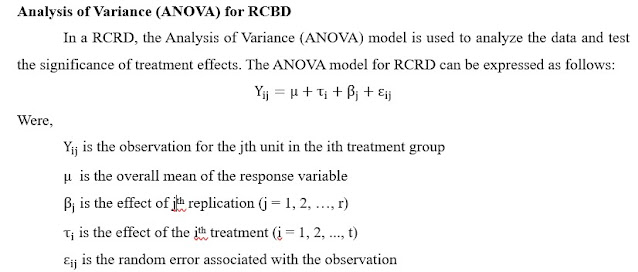Principles of design of experiments-II: Randomization
This blog deals with the basic concept of randomization and its functions along with a suitable example. (reading time 7 min.)
There are three principles of designs of experiments:
1) Replication
2) Randomization
In a previous blog, we have seen how replication provides an estimate of an experimental error. For a sound experiment, we need to estimate experimental error and that estimate must be an unbiased estimate. Randomization helps us to get an unbiased estimate of experiment error.
Definition
When all the treatments have equal chances (probability) of being allocated to all the experimental units it is called randomization.
Experimental units can be seeds, plants, animals etc. depending on your research. The procedure of randomization varies with the experimental design used.Randomization also allows us to use probability theory and different statistical techniques. The complex statistical techniques can be used only if randomization is used. Randomization also helps us to tackle personal bias towards a any treatment.
Different methods for randomization
- Chit method
- Random number table
- By using R software
Chit method
Chit method is used when number of treatments are low. It uses chits. The number of chits are equal to number of treatments. On each chit, one treatment is mentioned exclusively. Chits are randomly selected and treatments. Watch video for more details.
Random number table
Random number tables are specialized table used for selecting random values. In order to see random table click here
By using R software
Case: Suppose there are 15 treatments and in a Randomized Complete Block Design there are 3 blocks. Carry out randomization for the above mentioned case.
Run the below lines
#Generate treatment vector of 15 treatments
a<-paste("T",c(1:15),sep="")
#Draw random sample. Repeat the below mentioned line for three times
sample(a,15,replace=F)
Output from R
"T13" "T8" "T2" "T7" "T11" "T5" "T10" "T9" "T14" "T12" "T6" "T15" "T3" "T4" "T1" "T1" "T8" "T10" "T3" "T12" "T9" "T13" "T7" "T15" "T5" "T6" "T14" "T2" "T4" "T11" "T2" "T9" "T15" "T5" "T11" "T1" "T12" "T8" "T14" "T13" "T4" "T10" "T7" "T3" "T6" How arrangement will look like
If you find this blog useful please do share.
References:
1) Gupta, S. C., and V. K. Kapoor. Fundamentals of applied statistics. Sulthan Chand & Sons, 2019
2) Rangaswamy, R (2010). A textbook of Agricultural Statistics (2nd Edn). New Age International Publishers, New Delhi.
To learn more about Agricultural Statistics follow my youtube channel



Comments